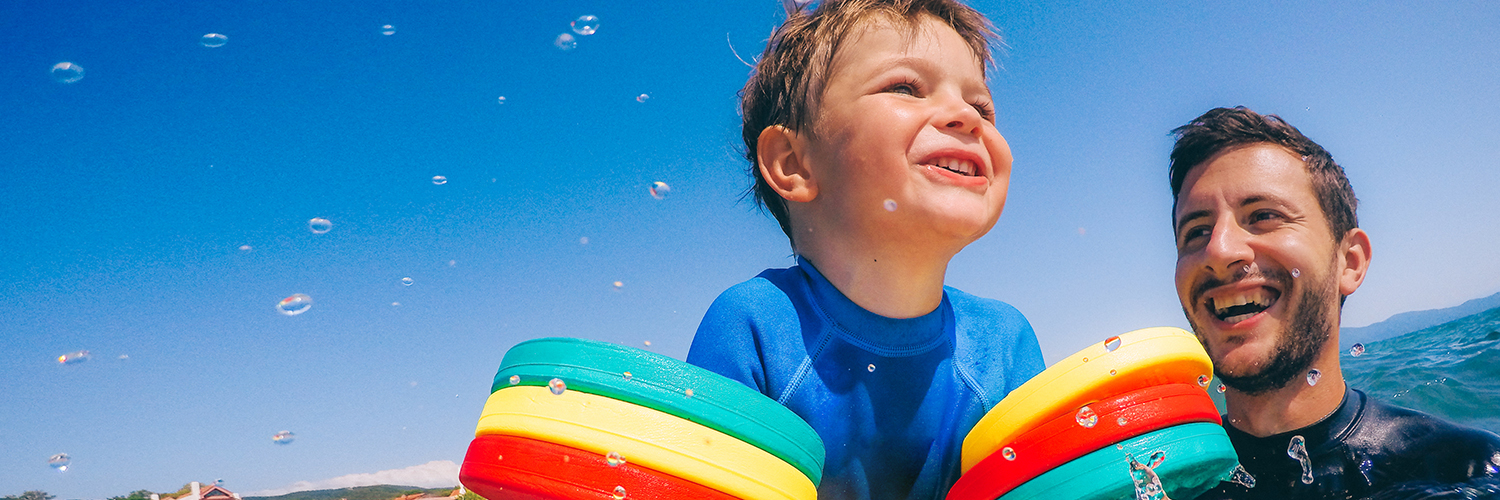Long Island’s beaches, pools and lakes offer perfect summer escapes, but with these water activities comes the responsibility of swimming safely. Understanding and practicing water safety measures can prevent drowning and ensure that everyone has a fun and safe outdoor experience.
What is Swim Safety?
Swim safety refers to practices and precautions taken to prevent drowning and other water-related accidents. It involves understanding the risks associated with water environments, including pools and beaches, and taking proactive steps to keep people of all ages safe.
Drowning is a serious concern, especially among young children, but it also affects adults, especially those with medical conditions that have an increased risk of drowning and adults taking medications that can affect balance, coordination or judgement.
According to the CDC, between 2020 and 2022, over 4,500 people drowned in the U.S. each year. Drowning is the leading cause of death for children between one and four years old.
Approximately 70 percent of all drownings in this age group occur when the child is not expected to be in the water or during non-swim times, such as when playing outside. This is why having a watchful eye on children, keeping them close to adults and fencing around pools are so important.
Swim Safety Tips
Here are tips to help keep yourself and your family safe while swimming and playing in the water:
- Active Supervision: Always keep a close eye on children and non-swimmers. Designate a “water watcher” to stay focused on the pool or beach and rotate this responsibility about every 20 minutes to maintain alertness.
- Secure pool areas: Use fencing around pools with self-closing gates to prevent children from entering the pool area unsupervised. Fences around pools should be at least 4 feet high and have secure latches. For an extra layer of protection, install locks and alarms on pool gates.
- Teach swimming and CPR: Enroll your children and yourself in swimming lessons, and if you’re a parent or caregiver, consider learning CPR (such as through the American Red Cross) to be prepared in case of an emergency.
- Empty large water containers: After each use, empty big buckets, kiddie pools and other large water containers to avoid drowning. If you have toddlers in your home, be sure to empty bathtubs completely and use a toilet bowl lock. Drowning can occur in as little as two inches of water.
- Close and lock covers on hot tubs and spas: If a cover is missing or broken, shut down the hot tub and empty it until it’s repaired.
How to Swim Safely in the Pool
When spending time in a pool with your family, these tips can help prevent drowning and other injuries:
- Keep floats and toys out of the pool: Remove objects from the pool when it’s not in use to discourage children from attempting to retrieve them. If floats are being used, make sure every child is accounted for at all times since children can get stuck under floats, causing them to struggle to breathe.
- Don’t run by the pool: Avoid running by a pool, as slippery surfaces can cause falls and injuries.
- Use the buddy system: Always swim with a buddy, even if you are a strong swimmer.
- Stay sober: Don’t drink alcohol or use drugs before swimming, as they impair judgment and coordination.
- Stay away from pool drains: Teach your child not to swim near pool drains or suction outlets, as this can cause them to panic and go under the water.
- Monitor health conditions: Be aware of how medications or health conditions (like seizures and heart arrhythmia) might affect your ability to swim. Consult a doctor if you have concerns about your swimming abilities, especially while using medications.
Tips for Swimming Safely at the Beach
- Swim near lifeguards: Only swim in areas monitored by lifeguards and follow their advice, including avoiding swimming when the water is rough or contaminated from runoff.
- Check the water conditions: Be aware of current conditions and potential hazards, such as rip currents or rough waters.
- Know your limits: Avoid swimming too far from shore and in strong currents, and be mindful of your physical limits. When in doubt, wear a life jacket if you’re worried about getting tired while swimming.
What to Do in a Drowning Emergency
If someone is in trouble while swimming, immediately call for help and dial 911. Alert lifeguards or nearby adults right away if they’re present. After calling for help, follow these steps:
- Perform CPR if you can: If you can safely remove the person from the water, call 911 and begin CPR immediately. Quick action helps to prevent brain damage from oxygen deprivation.
- Seek expert care ASAP: Transport the victim to a Level 1 trauma center, like Stony Brook Medicine, where specialists can provide care for near-drowning cases.
Swim safety involves a combination of vigilance, preparation and knowledge. For more information on water safety and to access expert advice, visit Stony Brook Children’s page for tips to keep your family safe this summer, or call (631) 444-KIDS to schedule an appointment with one of our primary care pediatricians.













